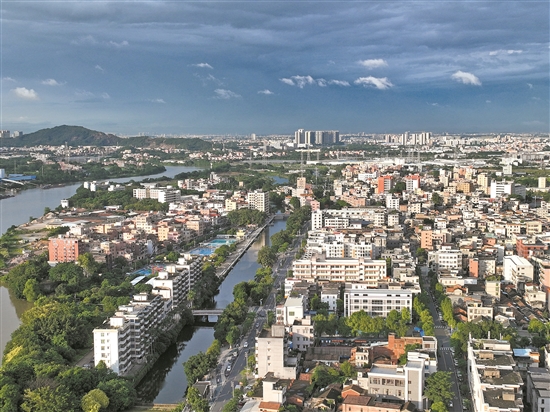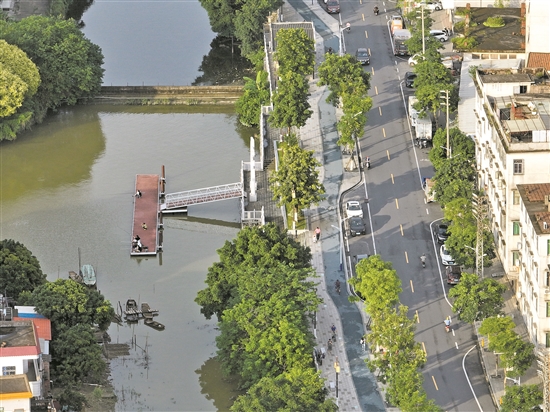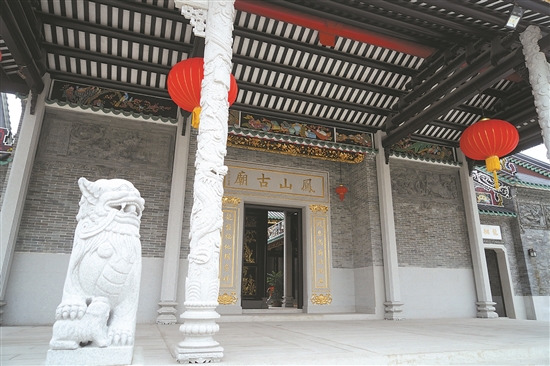
Imperial Kilns are a treasure of Shishan Town, Foshan, and Lingnan area.

As is shown in a recent exhibition about Nanhai symbols held at the Nanhai Museum, during the Song Dynasty, Nanhai kilns, represented by the Qishi Kiln and Wentouling Kiln(formerly known as the "imperial kiln"), produced goods for both domestic and foreign sales. Riding the winds of the "Maritime Silk Road", these products from Nanhai managed to reach the world.

In history, the flow of people and goods from Lingnan made their way north through the waterway of Guanyao Town (or the"imperial kiln"). As a bustling thoroughfare, visitors from all directions converged here, merging diverse cultures and making the place a fertile ground for legendary stories. From this perspective, Guanyao was most likely the first impression of ancient people from the Central Plains on the customs and culture of Guangzhou.
Since the annexation of Guanyao Town to Shishan Town in 2005, almost twenty years have passed. Walking along the Guanyao Riverside Road, historical buildings such as the Guanyao Bus Station and Guanyao Granary constantly come into view. Elderly people and children gather together, enjoying their walks and playtime, each finding their own delights. At the ancient market pier, young people cast their fishing lines towards the southwest creek. Such a scene is the best embodiment of leisure.

In July 2022, the Guangdong Provincial Institute of Cultural Heritage and Archaeology announced its new discovery—part of the large jars unearthed in the sinking ship from the Song Dynasty, known as "Nanhai I",as well as those resurfaced in the Site of Nanyue Kingdom Palace,were both produced in Nanhai kilns. Moreover, it was revealed that "Nanhai I" had once been to Guangzhou. This significant finding unveils the complete process of Nanhai ceramics, from production to port trade and the subsequent overseas voyages. Guanyao, or the imperial kiln, has once again stood in the spotlight.
On-site investigations indicate that the products of the Wentouling Kiln (formerly known as the "imperial kiln") boasted a rich variety of vessel shapes, diverse glaze colors, and highly skilled decorating techniques. Sadly, time has brought great changes, and the kiln industry of Guanyao no longer exists.
In May 2023, Li Jianshen, the founder of Sanbao International Ceramic Art Village in Jingdezhen and a distinguished professor at Jingdezhen Ceramic University, proposed the concept of the "New Imperial Kiln of the World". When he first saw the"products" of the imperial kiln, he was inspired with the idea of revitalizing the Imperial Kiln. His aim was to rediscover the value of the millennium-old imperial kiln and let the world once again behold its magnificence.
It is reported that the Guanyao Waterway was the main navigation channel from Nanhai County and Guangzhou City to the Central Plains on the Beijiang River. Porcelain and commodities were transported through this route, making it a bustling hub for trade since the Song Dynasty. The "market on the riverbank" in Guanyao thrived during the Qing Dynasty, stretching a total of 10 li (equaling 5 kilometers) and earning the title of the "Ten-Li Long Street." At one point, there were over 300 shops for groceries, 9 tea houses, 5 textile factories, and 8 cloth-drying sites.
Currently, the enhancement and transformation for the first phase of the "Ten-Li Imperial Kiln" project is near completion. Among them, along the five-li stretch, Fengshan Ancient Temple, the birthplace of the Guanyao Lettuce Festival, was restored. Along the six-li stretch, cultural corridors and lush avenues were constructed, with the historical buildings on the Yiyuan Road yet to become shops witha rich Lingnan style. Additionally, a Confucian merchant culture ancient post road and a folk culture street blending the characteristics of the water town, Guangfu commerce, and local traditions are upon completion.
Source:Yangcheng Evening News
佛山南海狮山:重燃千年窑火 点亮文化之灯
官窑是狮山的瑰宝,是佛山的瑰宝,更是岭南的瑰宝。
南海博物馆举行的“源·流——海丝视野下的南海符号”展览显示:两宋时期,以奇石窑和文头岭窑(古称“官窑”)为代表的宋代南海窑兼烧内销外贸产品,乘着“海上丝绸之路”的风帆,从南海到达世界。
历史上,岭南地区的人流、物流通过官窑水道徐徐北上。通衢要道,四方来客汇聚,八方文化交融,也正是风云故事的高发之地。从这个角度讲,官窑很有可能是古时中原地区的人们对广府风俗文化的第一印象。
官窑在2005年并入狮山镇,至今近二十年。行走在官窑沿江路上,官窑汽车站、官窑粮仓等历史建筑不断映入眼帘;老人、孩童成群结伴,散步、嬉戏,各得其乐;古墟码头处,年轻人将鱼线甩向西南涌。此情此景,休闲之至。
2022年7月,广东省文物考古研究院公布其新发现——宋代沉船“南海I号”出水的部分酱釉大罐和南越国宫署遗址出土的部分酱釉大罐产自南海窑,且“南海I号”曾到过广州。这一重要发现,揭示了一个南海陶瓷从生产到港口贸易、再到随船出洋的全过程。官窑之“窑”,再获瞩目。
现场调查情况显示,文头岭窑(古称“官窑”)的产品器形丰富,釉色多样,装饰方式与技法也非常高超。沧海桑田,官窑的窑业早已不在。
去年5月,景德镇三宝国际陶艺村创始人、景德镇陶瓷大学特聘教授李见深提出了“世界的新官窑”概念。当他第一次看到官窑的“出品”时,便萌生了重燃千年“窑火”的想法——重新找到千年官窑的价值,让世界再度看到官窑。
据了解,官窑水道是旧时南海县、广州城取道北江上中原的主航道,瓷器、商品等经此运出,故宋代以来商旅频繁,相当兴旺。官窑“河堤上的墟市”盛于清代,全长10华里(5公里),被誉为“十里长街”。某段时间,曾有经营杂货的店铺300余间、茶楼9间、织布厂5间、晒布场地8处。
目前,“南粤古驿·十里官窑”项目第一期的文化项目提升改造基本完成。其中,五里“古驿禅院”重修了官窑生菜会发源地凤山古庙,六里“榕荫古渡”带来了文化长廊与绿树浓荫,驿园路上的历史建筑将成为富有岭南风情的商铺。此外,一条结合水乡肌理、广府商贸、民俗特色而打造的儒商文化古驿道与民俗文化街区基本修好。
文 | 记者 黄松炜 张闻
图 | 记者 黄松炜
翻译 | 洪婷
-
Cultural innovation and industry integration highlighted at ICIF
2024-05-27 23:37:01 -
Experiencing Chinese traditional culture through the Dragon Boat Race
2024-05-27 23:37:01 -
Longest intercity railway in the Greater Bay Area: 30 minutes from Guangzhou to Foshan and Dongguan
2024-05-27 23:37:01 -
The 2024 'Ten Thousand People Bikini Show' held at the Chimlong Water Park
2024-05-27 10:49:04






